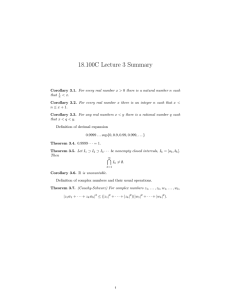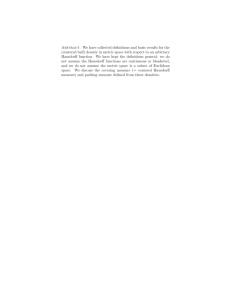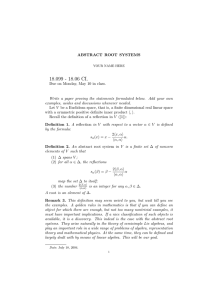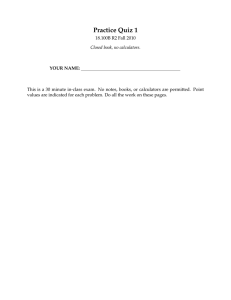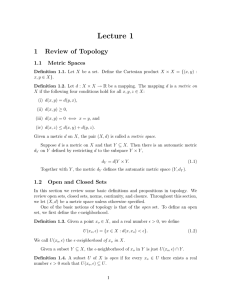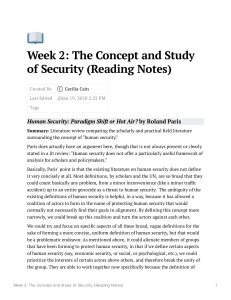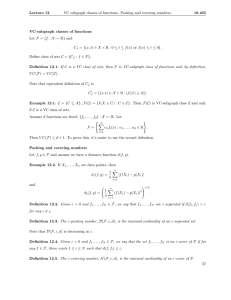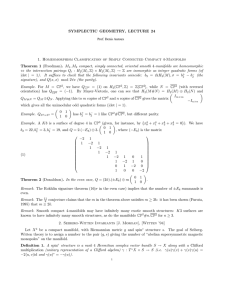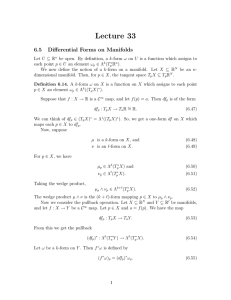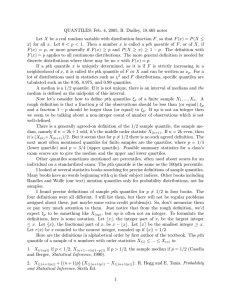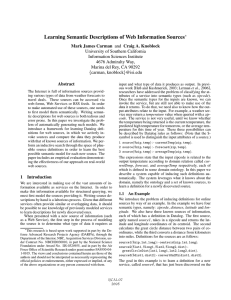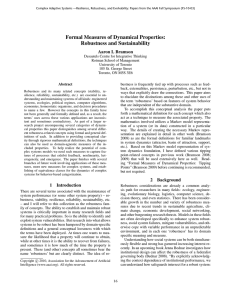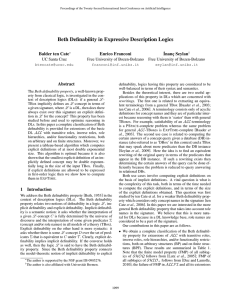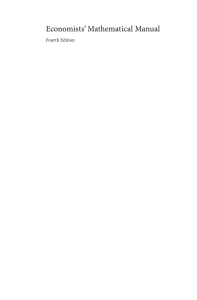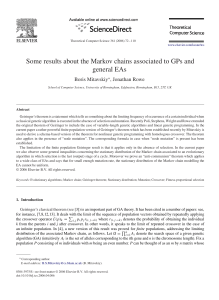Document 13570007
advertisement
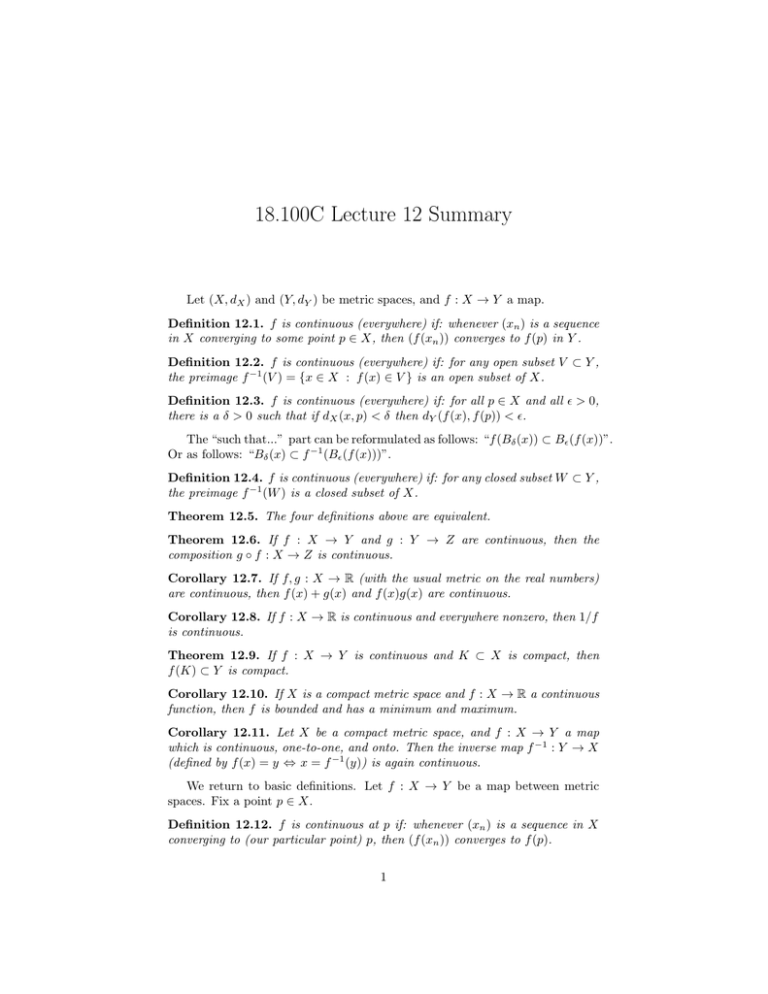
18.100C Lecture 12 Summary
Let (X, dX ) and (Y, dY ) be metric spaces, and f : X → Y a map.
Definition 12.1. f is continuous (everywhere) if: whenever (xn ) is a sequence
in X converging to some point p ∈ X, then (f (xn )) converges to f (p) in Y .
Definition 12.2. f is continuous (everywhere) if: for any open subset V ⊂ Y ,
the preimage f −1 (V ) = {x ∈ X : f (x) ∈ V } is an open subset of X.
Definition 12.3. f is continuous (everywhere) if: for all p ∈ X and all E > 0,
there is a δ > 0 such that if dX (x, p) < δ then dY (f (x), f (p)) < E.
The “such that...” part can be reformulated as follows: “f (Bδ (x)) ⊂ BE (f (x))”.
Or as follows: “Bδ (x) ⊂ f −1 (BE (f (x)))”.
Definition 12.4. f is continuous (everywhere) if: for any closed subset W ⊂ Y ,
the preimage f −1 (W ) is a closed subset of X.
Theorem 12.5. The four definitions above are equivalent.
Theorem 12.6. If f : X → Y and g : Y → Z are continuous, then the
composition g ◦ f : X → Z is continuous.
Corollary 12.7. If f, g : X → R (with the usual metric on the real numbers)
are continuous, then f (x) + g(x) and f (x)g(x) are continuous.
Corollary 12.8. If f : X → R is continuous and everywhere nonzero, then 1/f
is continuous.
Theorem 12.9. If f : X → Y is continuous and K ⊂ X is compact, then
f (K) ⊂ Y is compact.
Corollary 12.10. If X is a compact metric space and f : X → R a continuous
function, then f is bounded and has a minimum and maximum.
Corollary 12.11. Let X be a compact metric space, and f : X → Y a map
which is continuous, one-to-one, and onto. Then the inverse map f −1 : Y → X
(defined by f (x) = y ⇔ x = f −1 (y)) is again continuous.
We return to basic definitions. Let f : X → Y be a map between metric
spaces. Fix a point p ∈ X.
Definition 12.12. f is continuous at p if: whenever (xn ) is a sequence in X
converging to (our particular point) p, then (f (xn )) converges to f (p).
1
Definition 12.13. f is continuous at p if: for all E > 0, there is a δ > 0 such
that if dX (x, p) < δ then dY (f (x), f (p)) < E.
Theorem 12.14. The two definitions above are equivalent.
Definition 12.15. Let X, Y be metric spaces, f : X → Y a map, and p ∈ X a
point. We write
lim f (x) = q ∈ Y
x→p
if the following holds: for all E > 0, there is a δ > 0 such that if x = p and
dX (x, p) < δ, then dY (f (x), f (p)) < E.
The advantage of this is that it makes sense even if f is defined only on
X \ {p}.
Lemma 12.16. If f : X → Y satisfies limx→p f (x) = f (p), then it is continu­
ous at p (the converse also holds).
2
MIT OpenCourseWare
http://ocw.mit.edu
18.100C Real Analysis
Fall 2012
For information about citing these materials or our Terms of Use, visit: http://ocw.mit.edu/terms.

